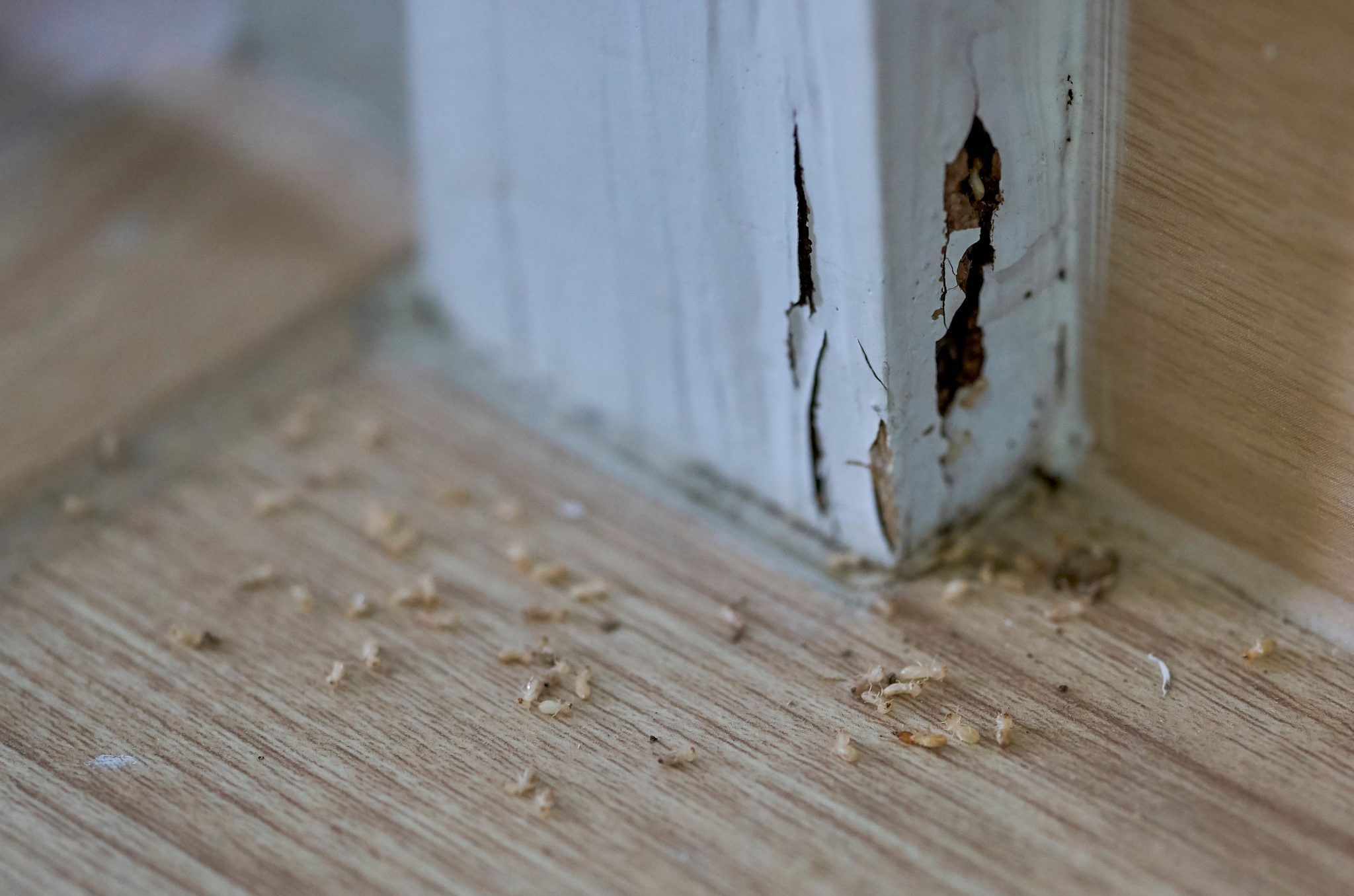Home

Termite infestations can be devastating. The annual estimated property damage value is $6.8 billion in the United States and almost $40 billion globally. Termite activities are low in the winter. However, warm temperatures in the spring bring termites out of their winter hiding nests in search of food and water. The winged adults will also swarm out of their hiding nests to start new colonies. Homeowners and the pest control professionals need to prepare for termite season each year.
Termite-Friendly Temperatures
In the spring, rising soil temperatures promote vigorous foraging activities from the hungry, over-wintered termites. Termites forage cryptically by tunneling underground and building mud tubes aboveground to find food and moisture above and below ground.
Rising ambient air temperatures also trigger the reproductive winged termites to emerge out of their nest to embark on a nuptial flight. This is an event known as swarming or dispersal flight. Swarming typically occurs on warm, humid, and calm days, usually after a rain. The winged termites swarm in large numbers to find mates. The successful pairs will burrow in the ground—or somewhere that has a combination of dirt, moisture, and wood—to start their own colonies.
With that being said, late spring and early summer are optimal times to schedule an annual termite inspection, which can help avoid costly damage to most people’s largest investments: their homes.
Termite Treatments
Termite treatments are not one size fits all. Annual inspection is one of the most important parts of a termite treatment. A termite inspection is best done by a licensed pest control professional because it requires knowledge on termite biology and the techniques/tools that most homeowners are not familiar with.
Homeowners need to set up a time with a licensed technician. Most importantly, be at home during the inspection, and give the inspector access to the entire premises. That primarily includes your house, garage, attic, basement, crawl space, sinks, and any other structures that need to be checked. Homeowners also need to remove any items blocking expansion joints in the garage and anything that limits access to crawl spaces or the space under sinks.
Termite Inspection Components
Inspection consists of two components:
- Inspect in and around your home interior and exterior for evidence and telltale signs of termite activities and infestation.
- Exam and notes on the premises’ conditions conducive to current and future activity.
Inspectors document these findings by drawing a graph that notes all the findings and use these findings to formulate plan on how to best treat the property or to remedy the problems. Of the evidence and signs of termite activity, the most obvious and easy to spot are the following:
- Above-ground mud tubes and mud spots
- Live and dead swarmers
- Shed wings
- Hollow or blistering wood damage
- Sagging floor
- Bulging paint/wallpaper
- Brittle drywall
- Frass (in the case of dry-wood termites)
Premises conditions that attract and favor termite activities are associated with moisture and wood. They include, but are not limited to, the following:
- Household plumbing leaks
- Roof leaks
- Clogged gutters and leaks
- Tree stumps
- Piles of wood
- Flower beds around the home
Termite Awareness Week
Every year, the second week of March is designated as Termite Awareness Week by the Professional Pest Management Alliance (PPMA). To promote this national observance, the PPMA will make their popular termite educational campaigns—such as Will They Eat It? and the Tiny Termite House—available on social media platforms, such as Facebook, X, TikTok, YouTube, and Pinterest.

